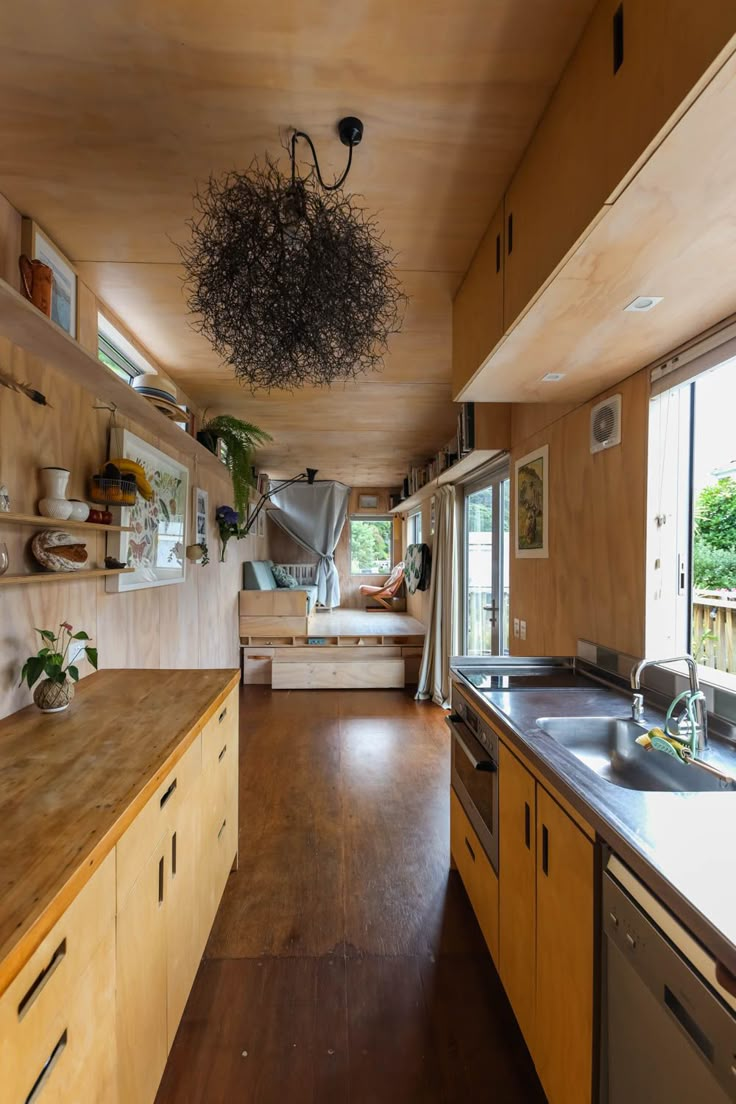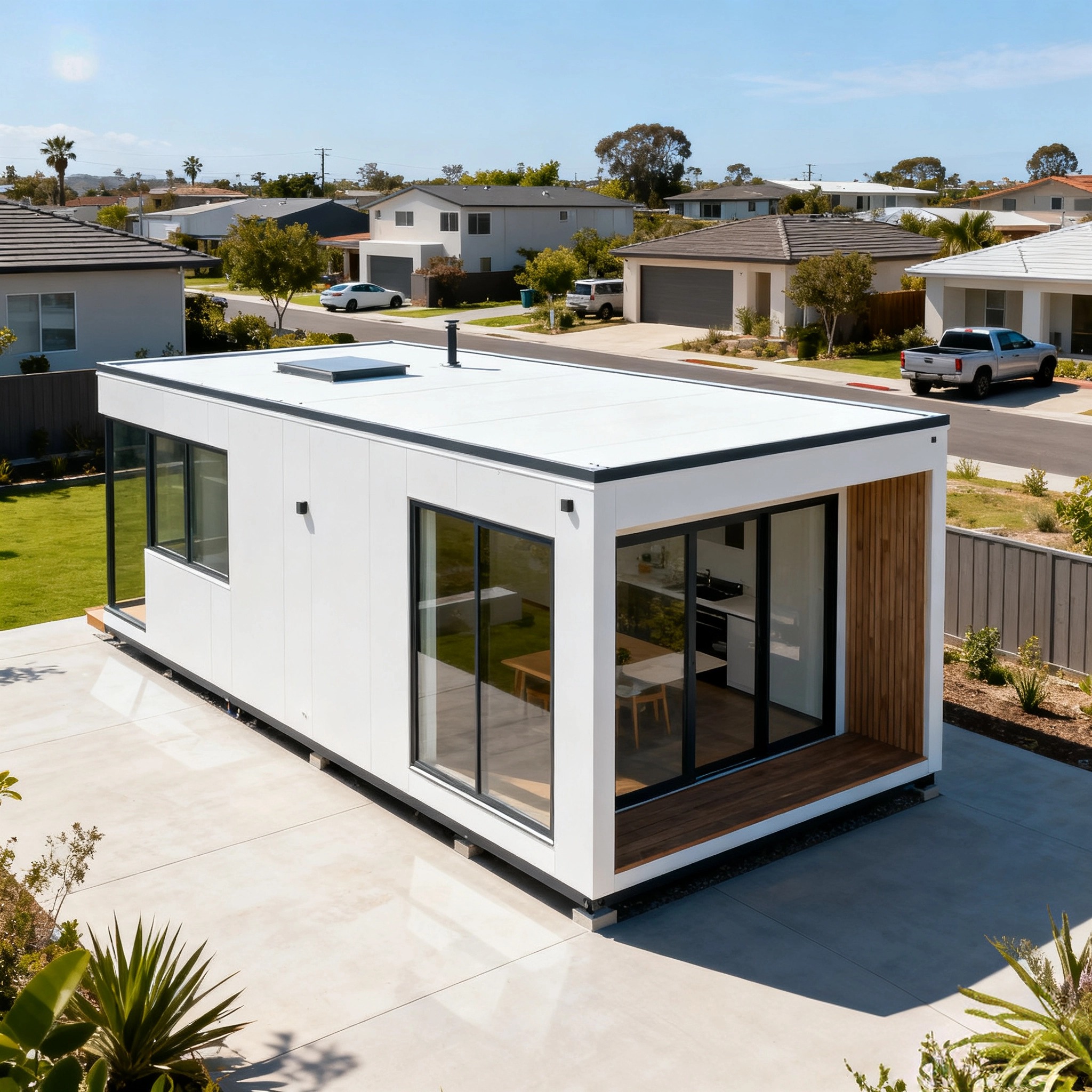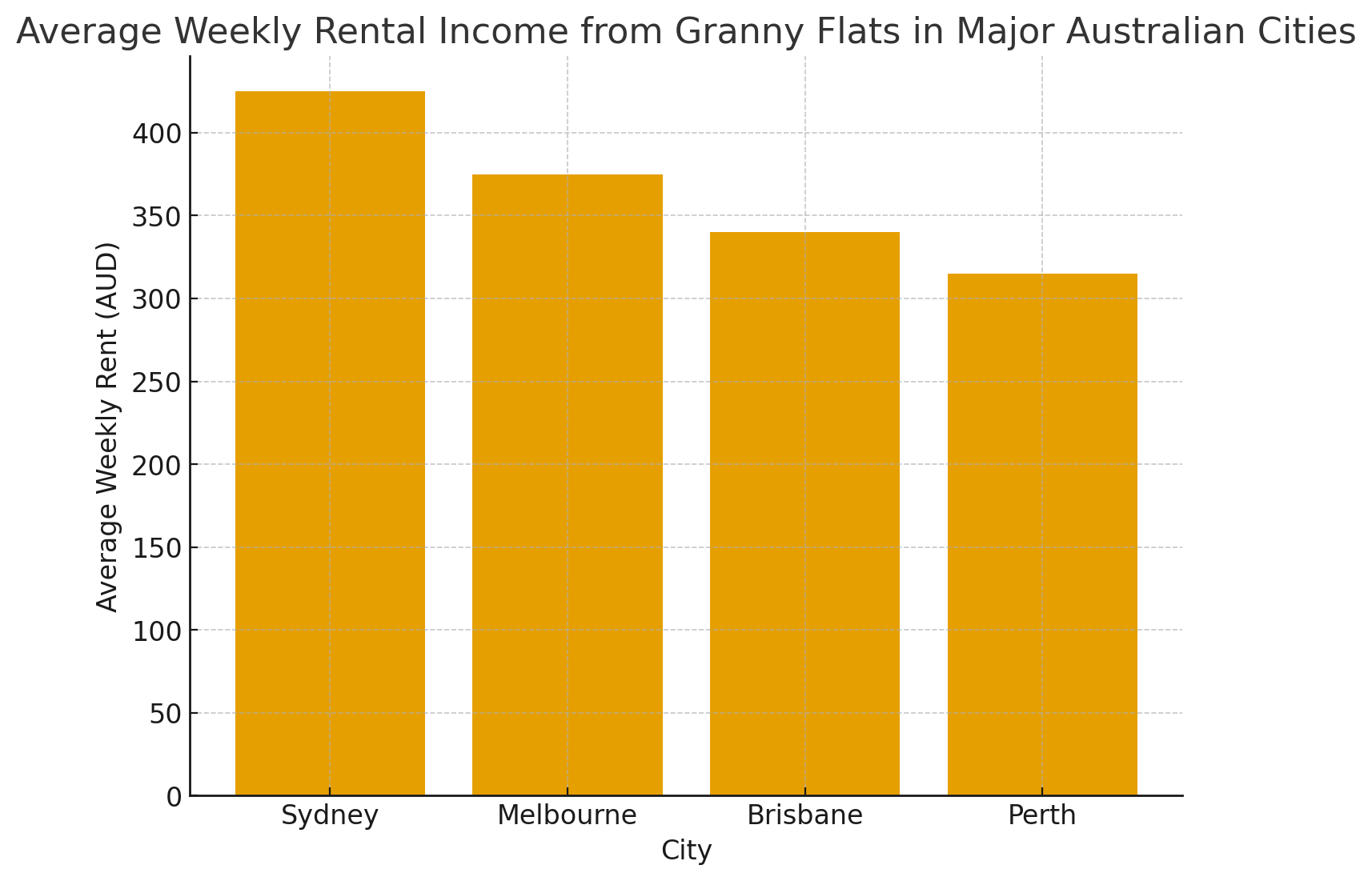Introduction
Australia’s property market is evolving, and so are the ways Australians are investing in real estate. With housing prices at record highs and rental demand outstripping supply, many homeowners are asking: “How can I make my property work harder for me?”
The answer for a growing number of Australians is simple: build a granny flat. Known legally as a secondary dwelling, a granny flat is more than just extra space in your backyard—it’s a powerful investment tool that can generate steady rental income, increase your property value, and provide long-term financial security.
What Is a Granny Flat?
A granny flat is a self-contained, smaller home located on the same block of land as a primary residence. Typically ranging from 40m2 to 60m2 and 20 FT,it comes complete with a kitchen, bathroom, bedroom, and living area.
In Australia, granny flats are classified as secondary dwellings—which means they share the same lot as the main home but can legally function as independent housing (subject to council approval).
Unlike tiny homes (which are often movable and minimalist) or modular homes (which can be large and standalone), granny flats are fixed, council-approved, and purpose-built for long-term living.

The Rise of Granny Flats in Australia
Granny flats were once seen primarily as housing for elderly relatives—hence the name. But today, they’ve become an investment trend.
- Rising Demand: According to CoreLogic, rental prices across major Australian cities have surged 10–15% in recent years. Affordable rental options like granny flats are in high demand.
- Government Support: Several states, including NSW and QLD, have relaxed regulations to make it easier to build secondary dwellings.
- Changing Lifestyles: Students, young professionals, and even retirees are seeking smaller, more affordable housing close to urban centres.
Why Granny Flats Are a Smart Investment
- Lower Entry Cost
Building a granny flat typically costs between $70,000 and $120,000, but our 20FT granny flats are only $32,500-38,000,which is far less than purchasing an additional property. - High Rental Yields
Weekly rental income often ranges between $300–$500, depending on location. This means potential yields of 7–12%, compared to the average 3–5% for traditional investment properties. - Adds Property Value
A well-designed granny flat can add $100,000+ to the resale value of your property, making it a long-term wealth-building strategy. - Multi-Use Flexibility
From short-term rentals (Airbnb) to long-term tenants, or even a home office, granny flats offer multiple ways to maximise your return.

How Much Can You Earn From a Granny Flat?
Rental returns vary by city:
- Sydney: $350–$500 per week
- Melbourne: $300–$450 per week
- Brisbane: $280–$400 per week
- Perth: $250–$380 per week
Case Study Example:
A Sydney homeowner spends $100,000 building a granny flat. Within five years, rental income at $400 per week generates over $100,000 in revenue, effectively covering the cost of construction, while continuing to add value to the property.
Compared to buying a second property worth $700,000+, a granny flat provides a faster return on investment with lower risk.

Other Benefits Beyond Income
- Solving Housing Affordability – Granny flats provide affordable options for tenants struggling with rising rents.
- Family Solutions – Perfect for adult children, elderly parents, or extended family members needing independence.
- Eco-Friendly – Smaller dwellings mean lower energy use and reduced environmental impact compared to full-scale homes.
What to Consider Before Building a Granny Flat
- Council Approval – Regulations vary by state. For example, NSW allows granny flats on blocks over 450m², while VIC may have stricter conditions.
- Financing Options – Many banks now offer loans specifically for secondary dwellings. Alternatively, homeowners can leverage equity in their property.
- Design & Construction – Modular and prefabricated designs are becoming popular, offering faster build times and cost savings.
- Site Suitability – Ensure your backyard has sufficient access, space, and privacy for tenants.
Frequently Asked Questions (FAQ)
Q: Can I legally rent out my granny flat?
A: Yes, in most states, granny flats can be rented to tenants, but always check local council regulations.
Q: How long does it take to install a granny flat?
A: When the modular house is delivered to the site, installation only takes a few hours
Q: Do granny flats increase council rates or property taxes?
A: While they may affect property valuation, the increase is usually offset by rental income.
Q: Can I build more than one granny flat?
A: Generally, only one secondary dwelling is allowed per lot, but rules vary by council.

